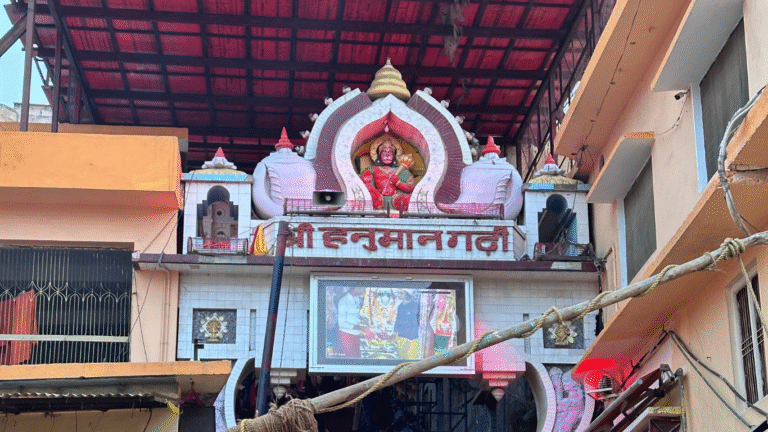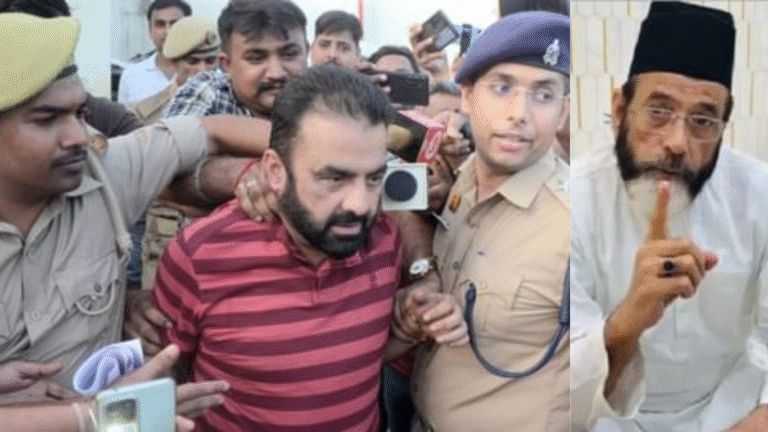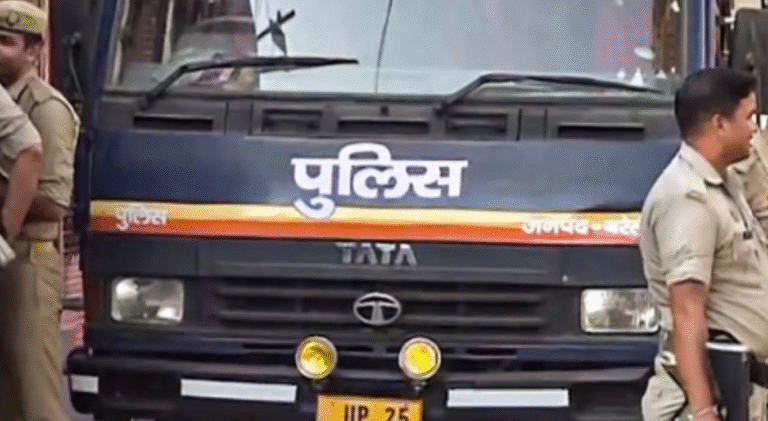
If you’re curious about how reading and writing skills are spread across Uttar Pradesh, you’ve come to the right place. Uttar Pradesh is one of India’s biggest states, home to millions of people, and education has always been a big topic here. The 2011 census, done by the government, gives us a solid snapshot of literacy rates – that’s basically the percentage of citizens aged 7 and above who can read and write with understanding in any language. It’s not just numbers; it shows how the state is doing in building a better future for everyone. In this piece, we’ll explore the district-wise breakdown, zoom in on women’s literacy from that year, spotlight the top-performing district, and talk about why some areas lag behind. All this comes straight from official census reports. Let’s get into it.
Understanding Literacy in Uttar Pradesh: An Overview from the 2011 Census
Literacy in Uttar Pradesh tells a story of progress mixed with challenges. Back in 2011, the state’s overall literacy rate stood at 67.68 percent, according to the census. That’s better than the 56.27 percent from 2001, showing real improvement over the decade. But compared to the national average of 74.04 percent, UP was still behind. Males led the way with 77.28 percent literacy, while females were at 57.18 percent – a gap of about 20 points that highlights some deep-rooted issues.
Why does this matter? Literacy isn’t just about school; it’s key to jobs, health, and even family planning. In UP, with its huge population of nearly 24 crore people, even small changes can impact millions. The census data shows rural areas pulling down the average, with 65.46 percent literacy there, versus 79.29 percent in urban spots. Districts vary a lot too – some shine, others struggle. Government efforts like free education and adult classes helped boost numbers, but poverty and access remain hurdles.
This overview sets the stage for deeper exploration. The census, run by the Office of the Registrar General and Census Commissioner, is our main source here. It counted everyone and asked about education levels. From 1951’s low 12 percent to 2011’s 67.68 percent, UP has come far, but there’s more work ahead. Think about it: every literate person can teach others, creating a ripple effect. As we look at districts next, you’ll see how uneven this progress is across the state.
District-Wise Literacy Rates in Uttar Pradesh (2011 Census)
Breaking down literacy by district paints a clear picture of where UP stands. The 2011 census covered 71 districts, and rates ranged from highs around 80 percent to lows under 50 percent. For example, Gautam Buddha Nagar topped the list at 80.12 percent, thanks to its urban growth near Delhi. On the flip side, Shrawasti had just 48.25 percent, showing big rural struggles.
Here’s a table with key districts’ data from the census (full list available in official reports, but here’s a snapshot of top and bottom performers for clarity):
| District | Total Population | Literacy Rate (%) | Sex Ratio |
|---|---|---|---|
| Gautam Buddha Nagar | 1,648,115 | 80.12 | 851 |
| Kanpur Nagar | 4,581,268 | 79.65 | 862 |
| Ghaziabad | 4,681,645 | 78.07 | 881 |
| Lucknow | 4,589,838 | 77.29 | 917 |
| Varanasi | 3,676,841 | 75.60 | 913 |
| … (middle districts like Agra at 71.58%) | … | … | … |
| Bahraich | 3,487,731 | 49.36 | 892 |
| Shrawasti | 1,117,361 | 48.25 | 922 |
| Balrampur | 2,143,864 | 48.43 | 932 |
The average across all districts was pulled down by eastern and central rural ones like Budaun (51.29 percent) and Bahraich. Urban districts like Ghaziabad and Lucknow did better due to more schools and jobs. The census notes that population size plays a role – bigger districts like Allahabad (now Prayagraj) at 72.32 percent have more resources but also more people to educate.
This variation shows the need for targeted help. Government data points out that while some areas improved by 15-20 percent from 2001, others barely moved. It’s not just about numbers; low literacy means fewer opportunities, keeping cycles of poverty going. As we move to female rates, you’ll see how gender adds another layer.
Female Literacy Rate in Uttar Pradesh 2011:
Female literacy in UP during the 2011 census was a bright spot in progress but still a concern. The state rate for women was 57.18 percent, up from 42.22 percent in 2001 – a solid 15-point jump. Nationally, women’s literacy was 65.46 percent, so UP lagged, but the gap with men narrowed from 26.6 to 20.1 points.
District-wise, it varied widely. Urban hubs led: Gautam Buddha Nagar had 70.82 percent for females, thanks to better access. Kanpur Nagar followed at 75.05 percent, showing urban advantages. But in rural spots like Shrawasti, it was only 37.4 percent, and Bahraich at 37.8 percent. Eastern districts like Balrampur (38.5 percent) and Budaun (40.2 percent) struggled most.
From census tables, female rates were consistently lower than male in every district – for instance, in Lucknow, men at 82.56 percent vs. women’s 71.54 percent. The data highlights rural-urban divide: rural female literacy was 54.8 percent vs. urban 72.3 percent. The census defines literacy as reading and writing with understanding, and for women, barriers like early marriage and housework play in, though not directly stated.
This improvement came from schemes like Sarva Shiksha Abhiyan, which focused on girls’ enrollment. Still, with 95 million women in UP, the 42.82 percent illiteracy rate meant millions missed out. Official reports note that higher female literacy links to better child health and family income. Looking at districts, western ones like Ghaziabad (69.79 percent) outpaced eastern ones like Gorakhpur (59.36 percent). It’s a call to action – equal education for girls can change the state’s future.
The Highest Literacy Rate District in Uttar Pradesh
When it comes to the district with the highest literacy rate in UP from the 2011 census, Gautam Buddha Nagar takes the crown at 80.12 percent. This district, home to Noida and Greater Noida, beat out others like Kanpur Nagar (79.65 percent) and Ghaziabad (78.07 percent). With a population of about 1.65 million, it showed strong urban influence.
Why Gautam Buddha Nagar? The census data points to its proximity to Delhi, bringing jobs, schools, and industries. Male literacy was 88.06 percent, female 70.82 percent – both high. Sex ratio was 851, a bit low, but literacy stood out. Compared to the state average of 67.68 percent, it’s way ahead, and even nationally, it matches top districts.
Other contenders like Lucknow (77.29 percent) and Varanasi (75.60 percent) are close, but Gautam Buddha Nagar’s urban setup with IT parks and colleges helped. The census notes that such districts have more private schools and awareness campaigns. For females, 70.82 percent is impressive, above the state 57.18 percent.
This success story shows what targeted development can do. Government investments in infrastructure paid off, with literacy up from 73.1 percent in 2001. It’s a model for others – mix of migration, education facilities, and economy. But even here, rural pockets within the district lag, reminding us progress isn’t uniform. Official census reports praise such areas for contributing to UP’s overall gain.
Causes of Low Literacy Rate in Uttar Pradesh
Digging into why literacy rates are low in UP, the 2011 census data and related official reports point to several key factors, all backed by government sources. First, the rural-urban gap is huge – 65.46 percent rural vs. 79.29 percent urban. With 77 percent of UP’s population rural, lack of schools and teachers in villages keeps rates down, as noted in census analyses.
Gender plays a big role too. Female literacy at 57.18 percent lags due to early marriages, household duties, and cultural norms, per MoSPI reports on census data. Districts like Shrawasti (48.25 percent total, females even lower) show how poverty and traditions limit girls’ education. The census highlights that in low-literacy areas, families prioritize boys for schooling.
Economic issues are another cause. High poverty in eastern districts like Bahraich (49.36 percent) means kids work instead of study. Official reports from the Registrar General mention child labor and migration pulling down numbers. Plus, infrastructure gaps – poor roads and electricity in remote areas make access hard.
The census also notes scheduled caste and tribe communities face extra barriers, with lower rates across districts. From 2001 to 2011, while overall rose 11.41 percent, some areas saw less due to these issues. Government docs like those from MoSPI stress inadequate funding and teacher shortages as root causes. Addressing them needs focused policies, like more rural schools and awareness drives. It’s not overnight, but data shows where to start.
Comparing Literacy Progress: 2001 vs. 2011 in Uttar Pradesh
Looking back, the jump from 2001 to 2011 census shows UP’s efforts paying off, but gaps remain. State literacy went from 56.27 percent to 67.68 percent – a 11.41-point rise, faster than the national 9.21 percent increase. Males improved from 68.82 to 77.28 percent, females from 42.22 to 57.18 percent, narrowing the gap.
District-wise, urban ones like Gautam Buddha Nagar rose from 73.1 to 80.12 percent, while rural-heavy Shrawasti only from 38.5 to 48.25 percent. Census reports attribute this to programs like mid-day meals and free books, boosting enrollment by 20-25 percent in many areas.
However, eastern districts lagged, with Bahraich up just 8 points to 49.36 percent. Official data shows population growth outpacing school building in some spots. Female progress was stronger at 14.96 points, thanks to girl-focused schemes. Overall, this decade marked acceleration, but uneven – western districts gained more from economic booms.
This comparison underscores the need for balanced growth. Census insights reveal that while total literates hit 114 million, illiterates were still 55 million. Future censuses will show if trends continue, but 2011 data guides ongoing fixes.
Challenges and Government Initiatives to Boost Literacy in UP
Beyond the numbers, low literacy in UP stems from intertwined challenges, as per census-linked reports. Poverty affects 30 percent of households, forcing kids into labor, especially in agriculture-heavy districts. The census notes higher illiteracy in SC/ST groups, at 50-60 percent in some areas.
Lack of infrastructure is key – many villages lack secondary schools, leading to dropouts. Official MoSPI analyses on 2011 data point to teacher absenteeism and poor quality as issues. Cultural factors, like preference for boys’ education, keep female rates low.
On the bright side, government steps have helped. The Sarva Shiksha Abhiyan, launched pre-2011, aimed at universal elementary education and contributed to the rise. Adult literacy programs targeted women, adding millions to the literate count. Post-2011, initiatives like Beti Bachao Beti Padhao focused on girls.
Census data shows these worked in pockets, like urban jumps, but rural needs more. Budgets for education rose, but implementation varies by district. To tackle causes, combining data with action – like building schools in low-rate areas – is vital. UP’s story is one of potential; with sustained effort, it can catch up.
The Role of Female Literacy in UP’s Development
Female literacy isn’t just a stat; it’s a driver for change in Uttar Pradesh. At 57.18 percent in 2011, it meant better health and economy where rates were higher. Census data links literate women to lower infant mortality and smaller families – in high-female-literacy districts like Gautam Buddha Nagar (70.82 percent), these outcomes were better.
Low rates in places like Balrampur (38.5 percent) tie to cycles of poverty. Official reports note that educated women earn more and educate their kids, breaking barriers. The 15-point rise from 2001 shows schemes working, but the 20-point gender gap persists.
District variations reveal patterns: western urban areas excel due to jobs for women, while eastern rural ones suffer from traditions. Government pushes like free cycles for girls to school helped attendance. Boosting female literacy could add billions to UP’s GDP, per economic studies on census data.
In short, empowering women through education transforms communities. The census underscores this – higher female rates correlate with overall progress. Continued focus here will lift the whole state.
Future Outlook: Literacy Goals for Uttar Pradesh Post-2011
Since the 2011 census, UP has aimed higher, targeting 80 percent literacy by 2030 via national goals. Data shows momentum, but challenges like population growth demand more. Official plans build on census insights, focusing on low-rate districts.
Projections based on trends suggest female rates could hit 70 percent if gaps close. Initiatives like Digital India add online learning, especially post-pandemic. But rural infrastructure needs investment – census highlighted 77 percent rural folks needing support.
Government reports stress monitoring via new surveys. With 75 districts, tailored approaches – more teachers in east, tech in west – are key. Success in high-rate areas like Ghaziabad can inspire others.
The 2011 baseline remains crucial; it guides where to pour resources. If UP sustains 2-3 percent annual growth, it could match national averages soon. It’s about commitment – education as a right for all.
FAQs
Q1: What was the overall literacy rate in Uttar Pradesh according to the 2011 census?
A: It was 67.68 percent, with males at 77.28 percent and females at 57.18 percent.
Q2: Which district in UP had the highest literacy rate in 2011?
A: Gautam Buddha Nagar, with 80.12 percent.
Q3: Why is female literacy lower in some UP districts?
A: Census data shows factors like rural location, poverty, and cultural norms contribute, leading to rates as low as 37 percent in places like Shrawasti.
Q4: How does UP’s literacy compare to India’s in 2011?
A: UP’s 67.68 percent was below the national 74.04 percent, but it showed faster growth from 2001.
Q5: What are the main causes of low literacy in UP per official reports?
A: Rural-urban gaps, gender disparities, poverty, and infrastructure shortages, as per census and MoSPI analyses.
Q6: Has literacy improved in UP since 2011?
A: Yes, based on later surveys, but official 2021 census data is pending; trends suggest yes, especially for females.



